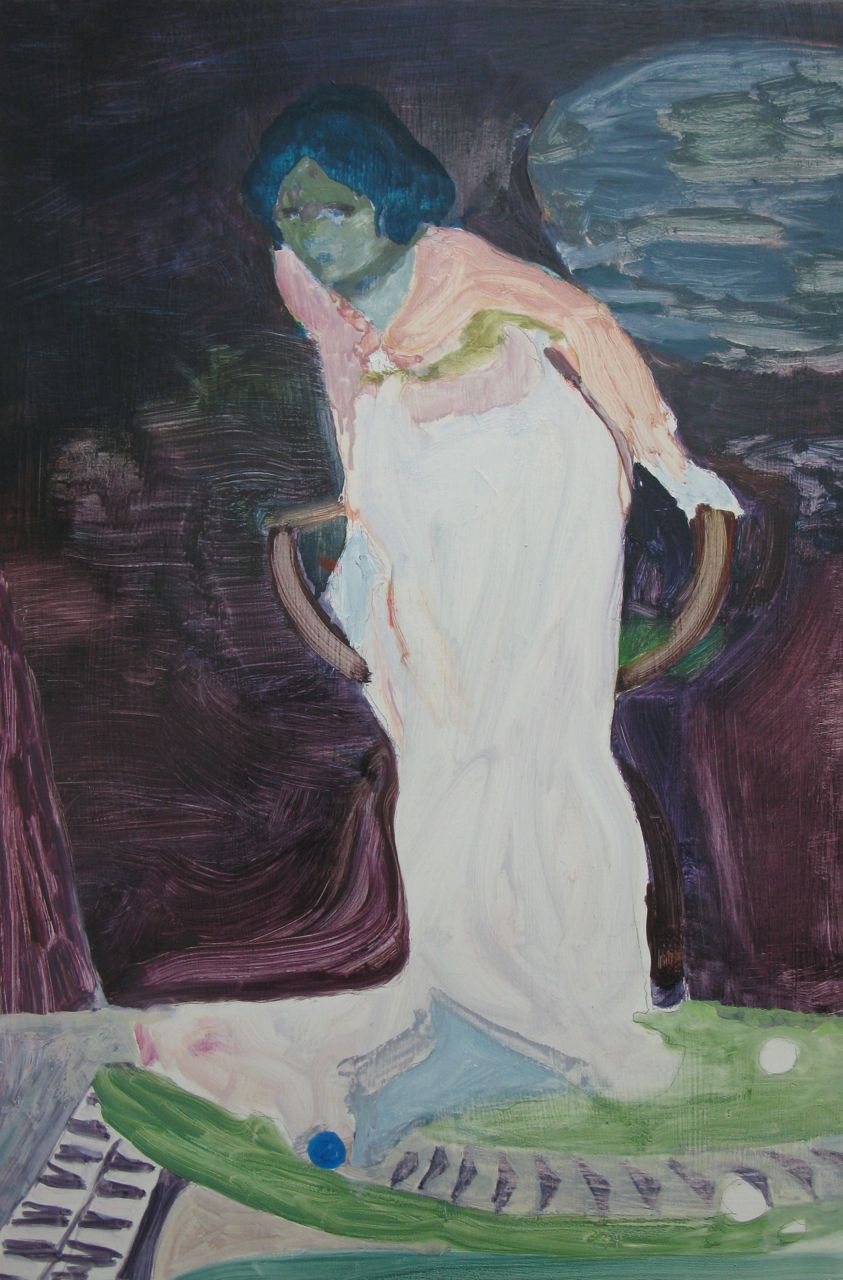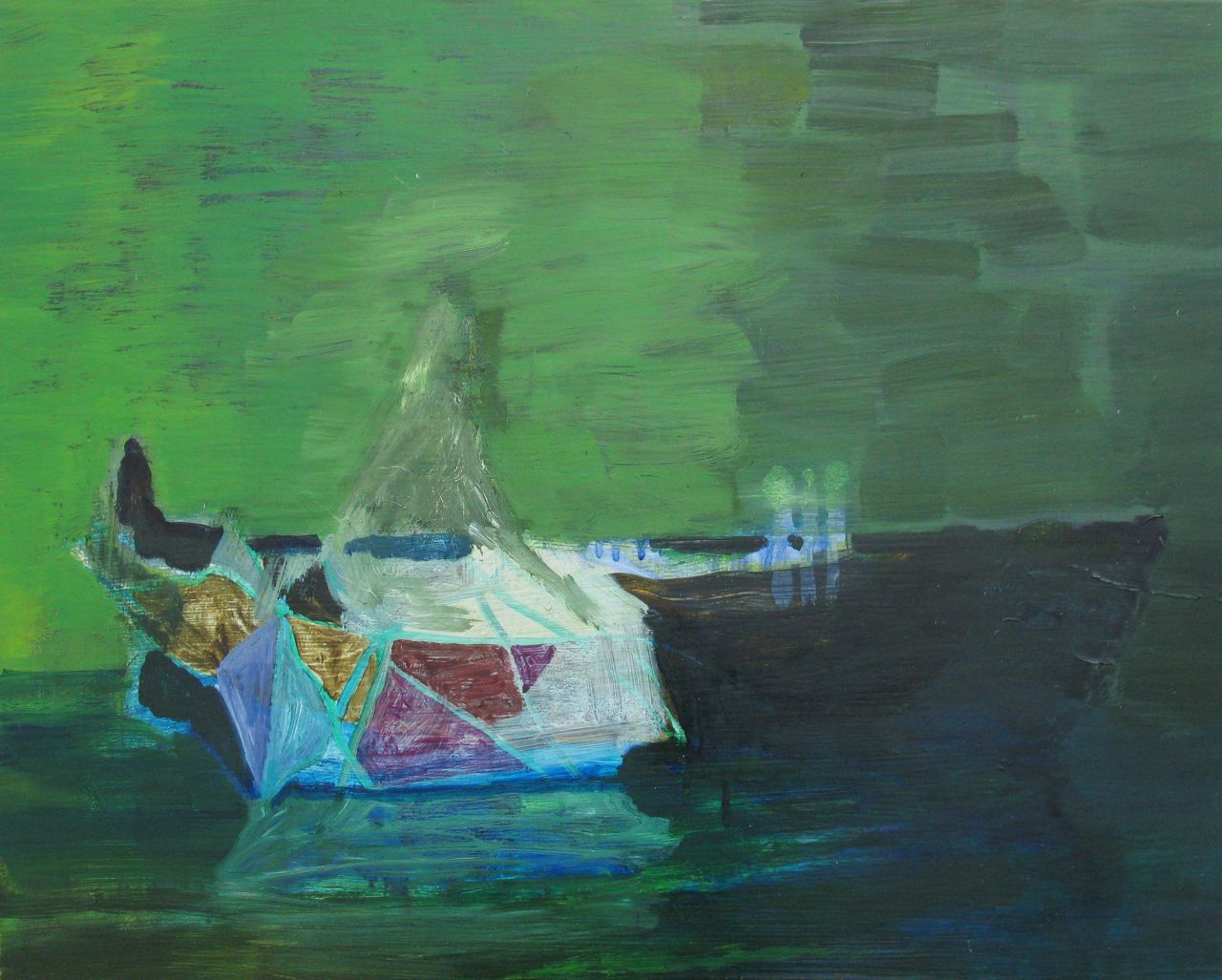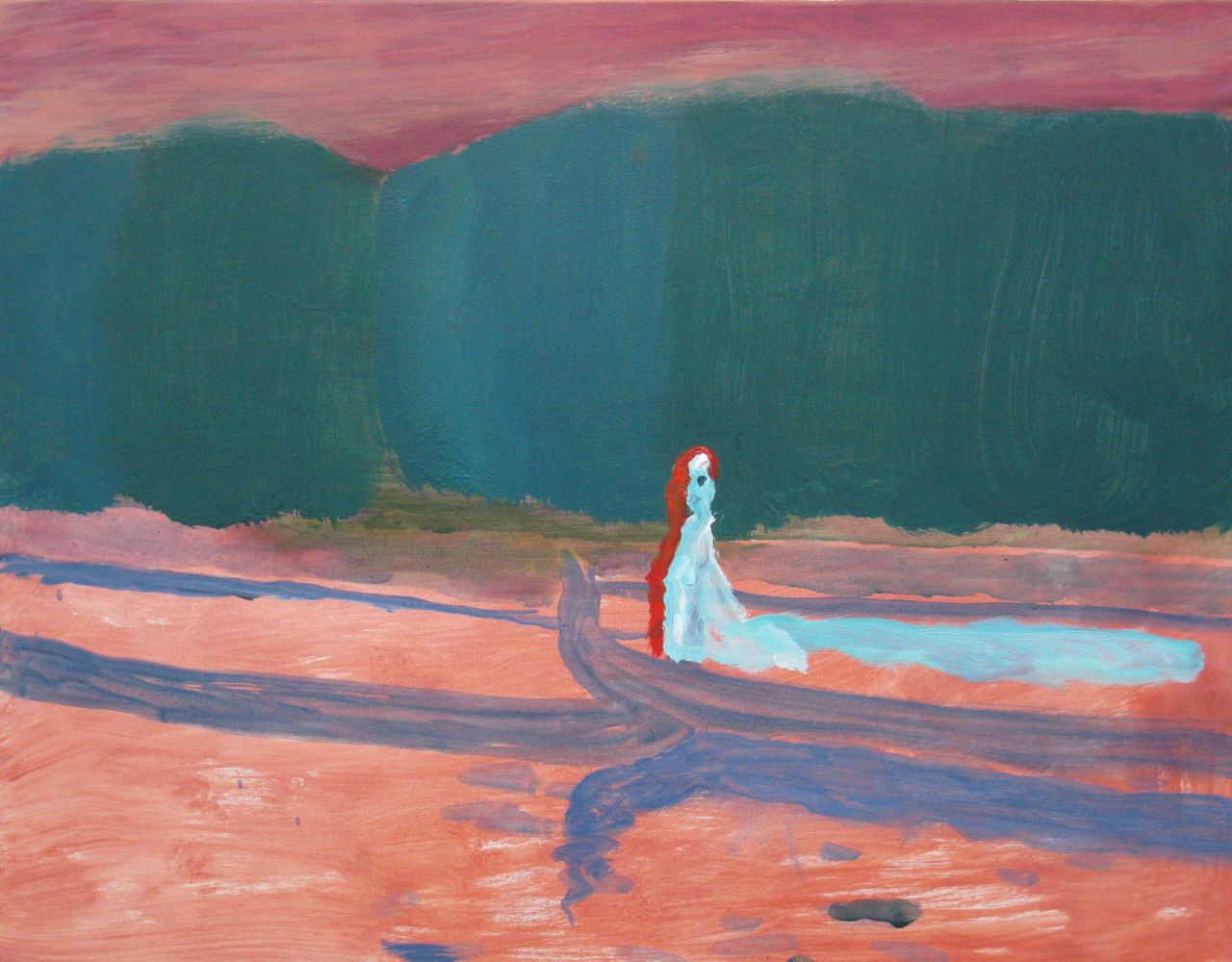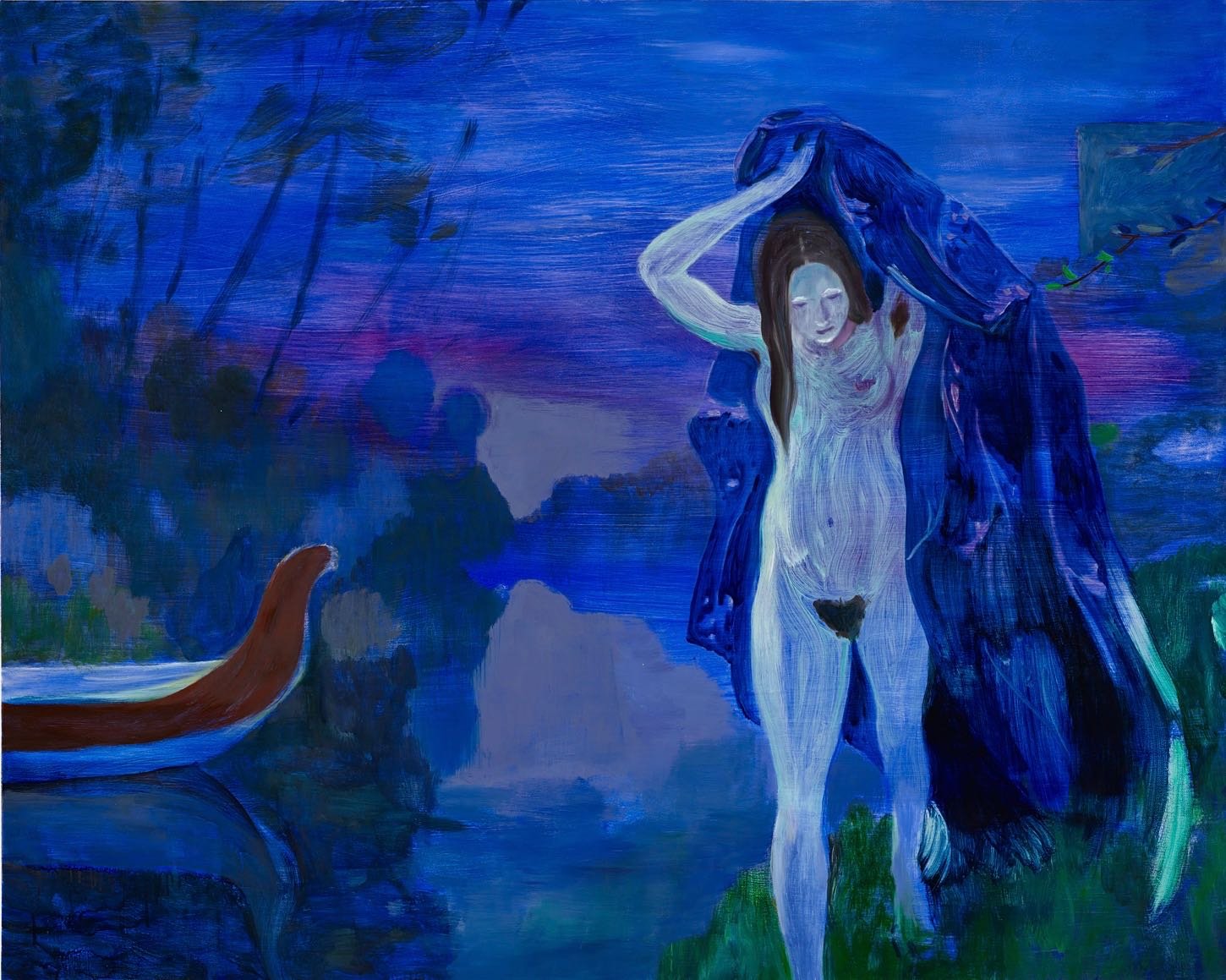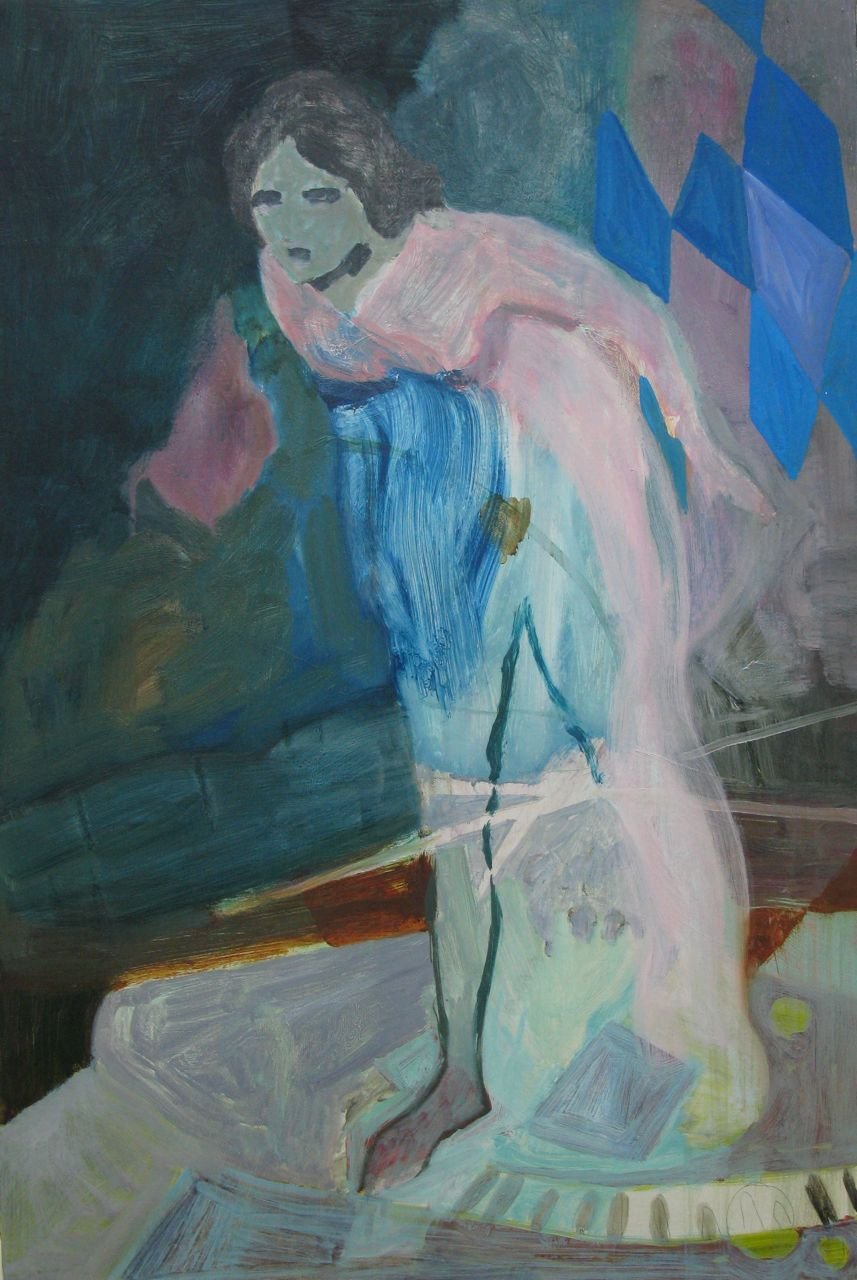The Ladies of Shalott
…But the assault is also in the story, the breaking of the mirror, the breaking down of the inside/outside divide of tower and world, body and world. The assault of feeling. In some ways, the story of The Lady of Shalott tells of the capacity for art to postpone living.
The opening story of the Arabian Nights, the story of Scheherazade, has things in common with The Lady of Shalott. One interpretation of the story is that, through story-telling, Scheherazade manages to postpone death indefinitely, that art manages to defy death. This is similar to the immortal life that The Lady of Shalott enjoys whilst focusing on her art, weaving.
And there is an affinity between story-telling and weaving – they are both domestic, traditionally female activities; we weave stories. I’m also making a connection with the process of analysis, whereby we construct a story of our life and in doing so make sense of it.
EM 2010
This tragic conclusion is, for our present purposes at least, perhaps the less interesting part of the tale. What is fascinating to Eleanor Moreton, and is the reason that she has recently embarked on a series of works based on the Arthurian legend, is The Lady of Shalott’s internal struggle as she watches the world shadowed in a mirror. Tennyson’s poem has been interpreted by many as a meditation on the problem faced by artists (in the broadest sense) since time immemorial: whether it is a heroic sacrifice to withdraw from the world for the sake of one’s art, or bolder to step out into the light and bear the ruinous consequences.
For Moreton, the alternatives are not as Romantically fraught as they were to the 24-year-old Tennyson, but she is nevertheless aware of their divergent attractions as she works on paintings and collages alone in her studio. Such pressures manifest themselves in her work as urgent conversations between the dead and the living, between the past and the future, and formally between space and object, depth and surface, thickness and thinness. Through her practice she reveals that shadows are not always cold, dark or lifeless. ‘In some ways’, she has said, ‘having a studio practice is the healthiest thing you can do.’
Jonathan Griffin - from The Ladies of Shalott 2010
